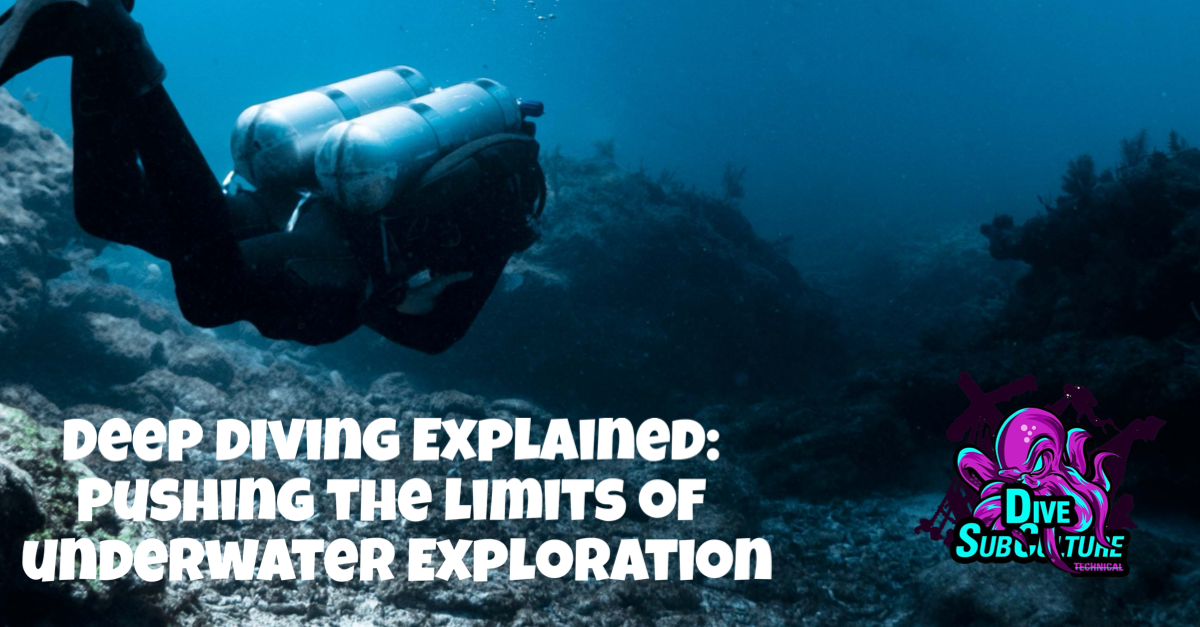Deep diving represents one of the most exhilarating and challenging aspects of underwater exploration. It allows divers to experience the ocean’s mysteries that lie beneath the surface, from vibrant marine life to breathtaking geological formations. However, deep diving also comes with its unique set of risks and requires specialized training, equipment, and knowledge. In this article, we will explore the essentials of deep diving, including the benefits, techniques, equipment, and safety measures that divers must understand to venture safely into the depths.
Understanding Deep Diving
Deep diving generally refers to any dive deeper than 18 meters (60 feet), the commonly accepted limit for recreational divers. As divers descend into deeper waters, they face increased pressure and changes in gas composition that can affect their physiology. According to the American Academy of Underwater Sciences (AAUS), deep diving is defined as diving beyond the recreational limits and often requires advanced training and equipment to ensure safety.
The allure of deep diving lies in the unique experiences it offers. Many divers seek out deep dive sites for the opportunity to explore shipwrecks, underwater caves, and stunning drop-offs where marine life thrives. However, the deeper you go, the more important it becomes to understand the physical and technical demands of deep diving.
Benefits of Deep Diving
1. Unique Experiences: Deep diving provides access to spectacular underwater environments, including coral reefs, drop-offs, and wreck sites, where marine life is often abundant.
2. Scientific Exploration: Deep diving contributes to marine research, helping scientists study underwater ecosystems and gather data on biodiversity and conservation efforts.
3. Adventure and Thrill: For many divers, the excitement of descending into the depths and discovering uncharted territories is a significant motivator, pushing them to challenge their skills and expand their diving experiences.
Deep Diving Techniques
Before embarking on a deep dive, it’s essential to understand several critical techniques that can enhance safety and enjoyment:
1. Proper Equalization: As divers descend, pressure increases, which can lead to discomfort or injury if not managed properly. Techniques such as the Valsalva maneuver (pinching the nose and gently blowing) can help equalize pressure in the ears and sinuses.
2. Controlled Descents and Ascents: Maintaining a slow and controlled descent is crucial to prevent barotrauma (injury caused by changes in pressure). Similarly, ascending too quickly can lead to decompression sickness (DCS), commonly known as “the bends.” Divers should adhere to recommended ascent rates, typically no faster than 9 meters (30 feet) per minute, and include safety stops during ascent.
3. Gas Management: Understanding gas mixtures is essential for deep diving. As depth increases, divers may require special gas blends (e.g., nitrox or trimix) to reduce the risk of narcosis and DCS. It’s crucial to plan gas consumption carefully and monitor remaining air supply throughout the dive.
Essential Equipment for Deep Diving
Deep diving requires specific equipment to ensure safety and comfort, including:
1. High-Performance Regulators: These are designed to function efficiently at greater depths, providing a consistent flow of air.
2. Technical BCDs (Buoyancy Control Devices): These devices help divers manage buoyancy effectively in deeper water, often equipped with multiple attachment points for additional tanks and gear.
3. Dive Computers: Advanced dive computers provide crucial information, including depth, time, and decompression limits, enabling divers to track their dive profile and make informed decisions.
4. Backup Equipment: Divers should always carry redundant systems, including a secondary regulator and additional dive lights, to address potential equipment failures.
5. Dive Lights: In deeper waters, visibility can decrease significantly. High-quality dive lights are essential for illuminating surroundings and enhancing the overall experience.
Safety Measures for Deep Diving
Safety should always be the top priority for deep divers. Here are several key safety measures to consider:
1. Training and Certification: Advanced training courses, such as those offered by TDI (Technical Diving International) or PADI (Professional Association of Diving Instructors), provide the knowledge and skills necessary for safe deep diving.
2. Dive Planning: Thorough dive planning is essential for identifying entry and exit points, assessing environmental conditions, and outlining contingencies for emergencies. Divers should communicate their plans with a buddy and adhere to them during the dive.
3. Buddy System: Diving with a partner is vital for safety. Buddies can assist each other during dives, ensuring that both divers remain within safe limits and are prepared for any emergencies.
4. Health Considerations: Divers should maintain good health and undergo regular medical check-ups, particularly concerning conditions that may increase the risk of DCS or other diving-related injuries.
5. Regular Equipment Checks: Ensuring that all diving equipment is properly maintained and functioning is crucial for safety. Regular checks before each dive can help identify potential issues.
Conclusion
Deep diving is an incredible adventure that opens up a world of exploration and discovery beneath the waves. However, it requires careful preparation, advanced training, and a strong commitment to safety. By understanding the techniques, equipment, and precautions involved in deep diving, divers can experience the thrill of the deep while minimizing risks. At Dive Subculture Technical Diving, we are dedicated to providing comprehensive training and support for those eager to explore the depths responsibly and safely.
For more information on deep diving training, techniques, and equipment, consider checking resources from organizations such as TDI, SSI, and the Divers Alert Network (DAN), With the right preparation, you can embrace the depths and discover the wonders that await beneath the surface.
References
1. American Academy of Underwater Sciences (AAUS). (n.d.). Deep Diving
2. Technical Diving International (TDI). (n.d.). Advanced Diving Courses
3. Divers Alert Network (DAN). (n.d.). Decompression Illness.
4. Professional Association of Diving Instructors (PADI). (n.d.). Deep Diver Course.







